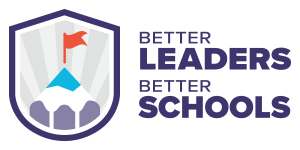Congrats on landing your first principalship. Now the real work begins …
(and if you haven’t signed your contract just yet, read this blog post).
The start of a school year is like a rocket launch. You’ve put in tons of effort and planning. The energy and excitement is great at launch, of course, but you’ll need a solid plan for keeping the momentum going.
Don’t worry. We’ve got you covered. And YES. You can do this …
Whether you are a new principal, aspiring principal, or veteran looking for a good reminder, this post is aimed at creating a solid foundation for leading your school year, from the first day to the last.
The aim of this post is to share some foundational knowledge about the principalship as well as an actionable checklist that first year and veteran school principals will both benefit from.
Being a principal is an exciting but challenging role that requires careful planning and execution. A new principal has a lot to learn and must quickly become familiar with their school’s culture, operations, and personnel. This checklist for principals covers key tasks to focus on each month of the year.
The first year principal checklist is free to download.

Tips
- Recognize that every school is unique so one of the keys to your success will be customizing this list to your school’s needs. Do your homework, and ask a lot of questions. Many things that pertain to your school will not appear on this checklist. Adapt it, and make it your own.
- Be a learner, and be okay with not knowing. Executive leadership coach Carol Kauffman says feeling a little lost does not make you an imposter. That’s what new feels like–a little lost. Your new school picked you because they saw something in you that they wanted.
- Connect with other school leaders in a space like the BLBS Mastermind. Everyone has been the new person before, and principals can grow faster in community.
- Show that you are a trustworthy leader through building relationships, using your expertise to make good decisions, and being consistent (Zenger & Folkman, 2019). That’s a recipe for growing trust in your new school.
- Change your mindset. As a teacher, you were the doer, the implementer. As a leader, you enable the doers to do their job with excellence. Get them the resources they need, move obstacles out of the way, provide access to instructional support, and care for them personally.
The Ultimate First-Year Principal Checklist
July
July is the start of a new academic year for many schools around the world. As a new principal, your first month is all about getting acquainted with your new school and establishing positive relationships with your staff. Here are some essential tasks you should focus on during this time:
- Meet with your predecessor: Schedule a meeting with your predecessor to learn about the school’s history, culture, and any critical issues that may need your attention. This may yield invaluable information, but take it all with a grain of salt since this is only one perspective. Get a feel for whether that leader was generally respected and on good terms with the community.
- Plan to meet with key stakeholders: Plan now for how you will set up times to meet with staff, parents, and students to understand their needs and expectations.
- Plan orientation for the new year: Some of this may already be in place so ask what action is needed on your part to be ready to launch a new year with staff and students.
- Quarter 1 important dates: Create and share a first 90 days calendar of school events, meetings, etc.
- Get out in the community: Meet community leaders, union representatives, and local business owners. Be proactive with relationship-building.
- Review your school’s policies and procedures: Familiarize yourself with the school’s policies and procedures, including those related to safety, discipline, and attendance.
- Finalize the master schedule: Send this out to staff.
August
August is a month for setting the tone for the year ahead. Here are some activities you should focus on in August:
- Site inspection: Walk through your site with your lead custodians to ensure everything is ready for reopening.
- Welcome them back: Plan for how you will welcome staff, students, and parents back to a new year. Communicate early!
- Establish goals for the year: Set your goals for the year, focusing on improving academic performance, creating a positive school culture, and supporting teacher development. Some goal setting should be deferred because you should be still gathering information through data and interviews. Refer to the Principal Entry Plan for more details on what this looks like.
- Observe classes: Observe classes to understand teaching styles, identify areas for improvement, and build relationships with your staff. This will be an ongoing and essential part of your role. If this is not a historical norm, set expectations that this will become part of the culture of your school moving forward.
- Plan staff meetings: Plan the scope of the year’s staff meetings to discuss vision, make agreements as a team, and discuss ways to work together to achieve your goals.
- 1:1 Meetings: Meet with every staff member to learn more about your school. What are people proud of? What do people wish was different? Making time to talk with each staff member and listen will lay a foundation of trust.
September
September is a time of transition as everyone settles into the new academic year. As a new principal, you should focus on building relationships with students and staff while setting the tone for the year ahead. Here are some action steps you should focus on in September:
- Visit classrooms: Take time to walk through classrooms and engage with students and teachers. This will help you build relationships and understand your school’s culture. Stay curious and maintain this habit of daily classroom visits every month.
- Evaluate the school’s safety protocols: Review and evaluate the school’s safety protocols, including emergency plans, fire drills, and lockdown procedures. Plan for upcoming drills and ensure staff are adequately prepared.
- Beginning of year assessments: Every school is different so understand your school’s assessment measures and ensure teachers have the information and resources to implement the assessments.
- Collaborative goal setting: Present the data you’ve gathered and work together with your team to establish goals. Some goals may have already been set by your central office.
October
By October, you should have a good understanding of your school’s culture and operations. This month, focus on building on that knowledge by working with your team to plot a path toward the goals you’ve set. Here are some activities you should focus on in October:
- Review learning and attendance data: Review student learning and attendance data to identify areas of strength, weakness, and increased risk. Use this data to adjust your goals and plan for the year ahead.
- Plan for parent-teacher conferences: Schedule parent-teacher conferences. Your role in this is to help your school shine. Staying on top of logistics, providing staff and students with what they need to do this well, and being visible are important action steps for you.
- Monitor instruction: Observe classes and give feedback often. This sets the tone for candor and connects you to the place where the magic of education happens. Use this to plan for resources and supports your school needs.
- 90 day planning calendar: Create and share a next 90 days calendar. At this point, you should be soliciting input from your district and building leadership team as you plan.
- Survey staff: Ask your staff about how you are doing as a leader. What is working for them? What is getting in the way? What do they need from you in order to do their best work for learners?
- Meet with new teachers and mentors: Meet with new teachers and mentors to determine how you can best support new teachers’ growth and mentors’ leadership.
November
This month, focus on supporting staff, students, and parents by providing targeted resources and interventions. Here are some tasks you should focus on in November:
- Plan for professional learning: Now that you know more about your school, what strategic supports do your teachers need to drive student learning outcomes? Are there any shifts you need to make to the professional learning plans? What areas of the curriculum need to be developed further?
- Implement interventions: Adjust systems and schedules, gather resources, and create space for collaborative problem solving to help teachers intervene where students are struggling.
- Celebrate successes: Celebrate student and staff successes to build morale and support a positive school culture.
December
December is a busy time of year, with many holiday events and activities taking place. However, it’s also a crucial time to ensure that learners are on track academically and socially. Here are some tasks you should focus on in December:
- Assess progress: Assess learning progress and provide feedback to teachers on how they can support their students’ academic and social development. Coach staff and students to maintain momentum when they are running out of steam.
- Plan for the second semester: Use the information gathered from the first semester to plan for the second semester. Adjust goals and strategies with your team. Ask, “Where are we now?”, “Where do we need to be?”, and “How are we going to get there?”
- Celebrate the holidays: Host holiday events and activities that celebrate the diversity of your community and bring everyone together.
- Survey staff: Ask your staff about how you are doing as a leader in Q2. What is working for them? What is getting in the way? What do they need from you in order to do their best work for learners?
January
January marks the start of the second semester and is an opportunity to re-evaluate your goals and strategies for the year. Here are some tasks you should focus on in January:
- Mid-year assessments: Ensure teachers have the information and tools to implement any required mid-year assessments.
- Adjust goals for the second semester: Based on the progress made in the first semester and the answers to the reflection your team completed in December, adjust goals and objectives for the second semester to stay on target.
- 90 day planning calendar: Create and share a next 90 days calendar for the quarter.
- Review and adjust budgets: Review and adjust budgets to ensure that resources are allocated effectively and efficiently.
- Provide support: Provide support for teachers as they prepare for the second semester, including offering professional development opportunities and resources.
February
February can be a challenging month as students and staff can feel overwhelmed by the demands of the year. As a principal, your role is to provide support and encouragement. Here are some tasks you should focus on in February:
- Survey the climate: Conduct a climate survey for your school.
- Meeting with teachers: Check in with teachers to encourage them as they work towards the end of the academic year. Convey that they are not cogs in a wheel, but people you genuinely care for.
- Review behavior data: Review student behavior data to identify areas for improvement. What action do you need to take to address behavioral concerns? What do your staff need in order to do this effectively?
- Plan for testing: Plan for standardized testing by ensuring that students and teachers are prepared and that necessary resources are available. Communicating clearly about logistics in advance demonstrates respect for your staff and their valuable work.
March
March is a critical month for students as they prepare for the end of the academic year. As a school principal, your focus should be on aiding student success and providing resources to help them achieve their goals. Here are some activities you should focus on in March:
- Monitor progress: Monitor student progress and provide feedback to teachers on how they can bolster their students’ academic and social development.
- Review staffing needs: Review staffing needs for the upcoming academic year and communicate with your central office about the process of hiring new staff if necessary.
- Plan for end-of-year activities: Begin planning for end-of-year activities, including graduation ceremonies, field days, and other events.
- Meet with new teachers and mentors: Set up a meeting with new teachers and their mentors to learn what has worked well and what needs to be tweaked for the future.

April
April is a busy month as students and teachers prepare for end-of-year assessments and activities. Here are some tasks you should focus on in April:
- 90 day planning calendar: Create and share a next 90 days calendar for the final quarter.
- Survey staff: Ask your staff about how you did as a leader in Q3. What is working for them? What is getting in the way? What do they need from you in order to do their best work in Q4?
- Provide academic support: Work with teachers provide academic assistance to students who are struggling to meet end-of-year benchmarks.
- Review and evaluate assessment data: Review and evaluate assessment data with staff to identify areas of strength and weakness for students and adjust strategies as needed.
- Implement state testing requirements: Implement state testing requirements for your site. Use your position as a chief cheering officer this month to motivate students and staff through a challenging assessment season.
- Set budgets: Meet with your superintendent or central office staff to determine how budget planning works in your district. Draft the budget for the coming year.
- Prepare contracts: Work with your district leadership to prepare contracts for the upcoming academic year. Check with your district about the exact timing for contracts.
- Interview for new staff: At this point you may already know some positions that need to be filled for next year. You will likely conduct interviews for the next month or two.
May
May marks the end of the academic year and is a time for celebrating student success and planning for the next academic year. Here are some tasks you should focus on in May:
- End of year assessment: If your school conducts any end-of-year assessments aside from state benchmarks, ensure your staff have everything they need in order to run this smoothly.
- Celebrate success: Host end-of-year celebrations to celebrate student success and achievements. Annual celebrations create familiar anchors for your school culture.
- Plan for summer programs: Plan for summer programs and resources to address student learning and development over the summer.
- Review and evaluate the academic year: Review and evaluate the year, including academic and social successes and areas for improvement.
- Send out contracts: Send out contracts to staff for the new academic year.
June
June is a time for wrapping up the academic year and preparing for the next. As a school principal, your focus should be on ensuring a smooth transition for students and staff. Here are some activities you should focus on in June:
- Wrap up the year: Wrap up the academic year by completing necessary paperwork, evaluations, and reports. Have any policies or procedures changed that need to be updated in handbooks?
- Celebrate staff: Host an end-of-year celebration to thank and celebrate the hard work of your staff. This should only be a footnote on something you have been doing consistently all year.
- Plan for the next academic year: Begin planning for the next academic year by reviewing data from this year, setting goals with your team, and evaluating staffing needs.
- Plan for the launch of a new year: Release important dates for the start of the next school year including orientation and induction. Begin to plan for what this needs to look like in order to propel your school toward the newly established goals.
Conclusion
The first year as a school principal can be challenging, but with the right mindset and approach, it can be a year of growth, personal and professional development, and celebration.
By focusing on the items on this checklist, you can ensure that you are addressing the most important tasks each month and setting yourself up for success as a principal. Certainly, there may be times you feel that you are just surviving.
Joining a BLBS Mastermind is a great way to meet like-minded ruckus makers and stay away from isolation.
Remember, the most important part of being a school principal is supporting and empowering your students and staff to achieve their full potential. Become their chief cheerleader and move mountains to see them succeed! Go Make a Ruckus!
Sources
Zenger, J. & Folkman, J. The 3 Elements of Trust. Harvard Business Review. https://hbr.org/2019/02/the-3-elements-of-trust


